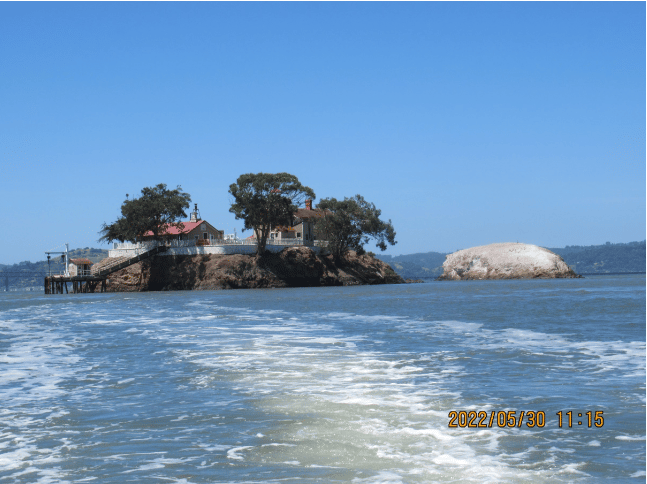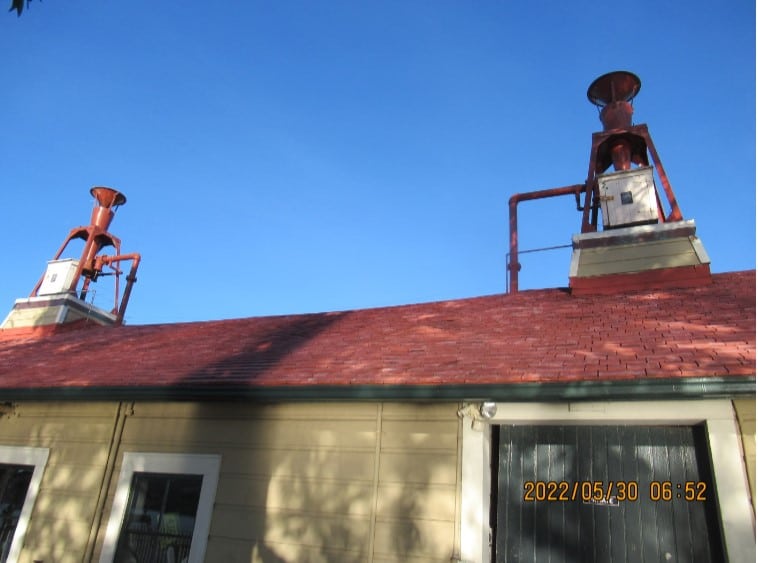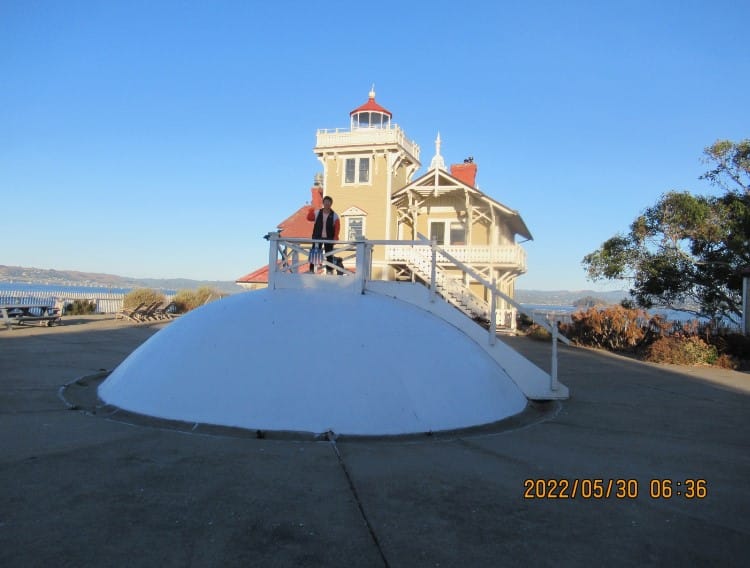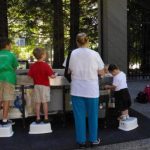Blog
A Beacon to Reckon With
Article by Pauline Chu, CuriOdyssey Docent
I have always wanted to live in a lighthouse, for a while. Sure, there would be gales, heavy rains, mountainous waves, bone-chilling nights. And there would be steps to climb, light wicks to ignite, machinery to check on and fix, things to polish, instruments to keep in working order.
But if I had the right partner, one who wouldn’t mind all the hard work with me, we could watch sunrises and sunsets every day, tie and untie nautical knots, learn to signal with flags, watch sailboats go by and wave at them, look out for whales, dolphins, and all kinds of sea mammals and soaring birds. We could make love on sunny days, getting our derrieres burnt a little; sing with the birds, learning to distinguish their different tunes; sleep under the stars, waking when the first dewdrops caress us.
So, when I read about this light station off San Pablo Bay, in Richmond, looking for a couple to be their 35th and 36th lighthouse keepers, I jumped at the chance… to get myself booked for a night, because this East Brother Light Station (EBLS) is a bed and breakfast now. That was in 2019. Two weeks ago, I went back, this time a combination birthday and Mother’s Day gift from my daughter.




A ten-minute boat ride from the Point San Pablo Harbor, the light station was built in 1874, on top of a one-acre rock. There are many islands in the San Francisco Bay, and I found out, during my first stay, the difference between a rock and an island. Islands are essentially rocks also, surrounded by water, but an island has to be exposed all the time; while a rock is sometimes exposed and at other times submerged. When the U.S. Coast Guard decided to have a lighthouse built in the area, they chose the biggest of four rocks, and blasted off the top. The decision to have a lighthouse at that location was not because of unforgiving waves, but rather due to shallow waters in the bay. A lighthouse, with its rotating beacon, could direct bigger ships where to sail – namely, along the deepest channel of water in the Bay.
A house was built in the American Stick style, designed by Paul J. Pelz. It had two floors, with two bedrooms on each floor. A cistern was dug, which held 50,000 gallons of rain water, and a tower was added to hold 20,000 more. This is the only source of water for the light station, and guests who stay just one night are told not to shower, even when there is no drought. There is one bathtub on each floor.
The original lens for the lamp had a wick that used whale oil and lard. The keepers had to haul all that oil up a winding staircase to fill the lamp. It was automated in 1969. The fog horn is housed in a separate building. In the beginning, it was a steam horn, fueled by coal. This was changed to compressed air, and now it is a solar-powered electric horn.
When fire broke out in the 60’s, people wanted to blow up the compound. So what did friends of the light station do? They petitioned for it to be listed in the National Registry of Historic Places, in 1971. With that designation, the East Brother Light Station Inc. was formed in 1979 as a non-profit group. The following year, it welcomed its first guests, after extensive renovations were done.
When the world came to a screeching halt in March 2020, the keepers resigned after several months of limbo. In the fall of 2021, the world was cautiously moving about, and a search for new keepers was set in motion. However, the results were less than satisfying, and the EBLS’ officers called Bryan and Stephanie to help them out.
Bryan and Stephanie had been light house keepers from 2014 to 2017, and were restoring their ketch when they got the call. Without hesitation, they left their boat in CT, and came to the rescue of EBLS. To be keepers, at least one partner has to be a captain (that’s one way to weed off 95% of applicants), but in this case, both Bryan and Stephanie are licensed captains.
They come in a motor boat in mid-afternoon to meet the guests at the harbor, and everyone gets a taste of adventure as the boat bounces on the waves, with the sea gently spitting on his or her face. After all the guests have settled in, hors d’oeuvres, champagne, and a local wine are served, either outside or in one of the public rooms on the second floor. The guests get to know each other, while eating some homemade niceties.
Stephanie is an amazing cook, using fresh, local ingredients. Though the meals are ‘fixed’, she and Bryan are sensitive to their guests’ food allergies and choices (vegan, for example); and provide sparkling cider or sodas to non-imbibers. They are very attentive during meals, listening to our banter, adding to the conviviality of the meals. We feel that we are not just paying guests, but are among friends, if only for a day.
After breakfast, Bryan tells us the history of the light station, with some hair-raising tales and deeds of derring-do. He then leads us to the fog signal building, and shows us the intricate workings to sound the signal, which goes on all day between October and April. Guests who stay during those months are given ear buds for the night, if they need them.
The horn is activated, and each guest receives strong headsets before exiting the building to listen to the horn, which sounds twice. Believe me, the blast can knock your socks off if your ears are not protected. We watch sea gulls, commuting boats, leisure boats, and the Richmond/San Rafael Bridge in the distance; get some souvenirs from the gift shop; before we have to leave this little piece of paradise. That’s one item I can cross off my bucket list.
Join the CuriOdyssey Community
LOCATION
1651 Coyote Point Drive
San Mateo, CA 94401
Ohlone Land Acknowledgement
650-342-7755
info@curiodyssey.org
CuriOdyssey is a 501(c)(3) non-profit, Tax ID 94-1262434




